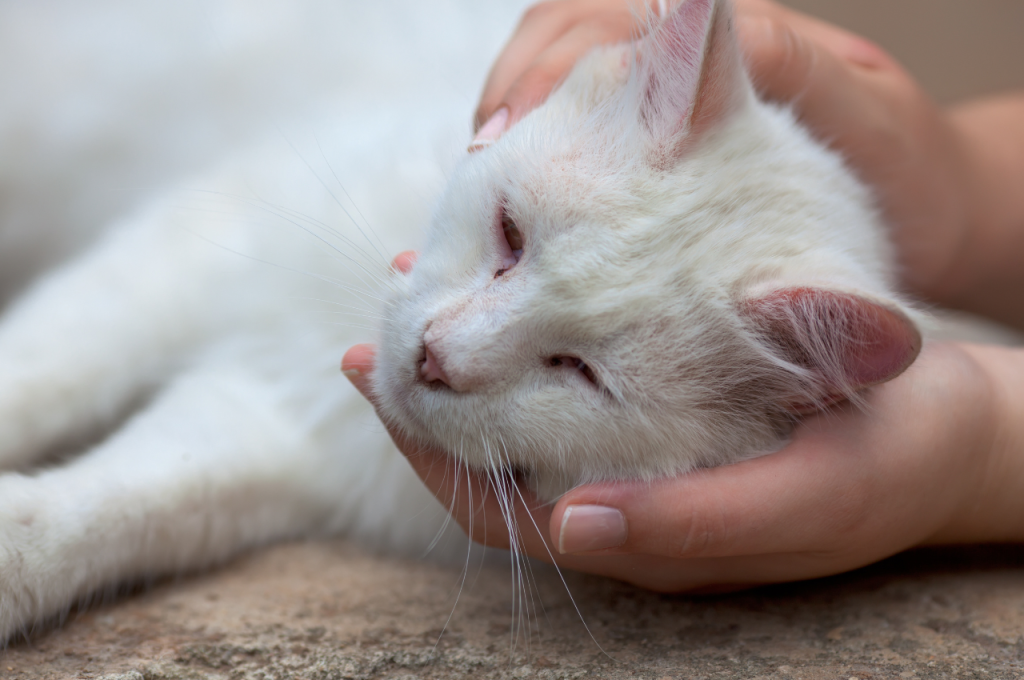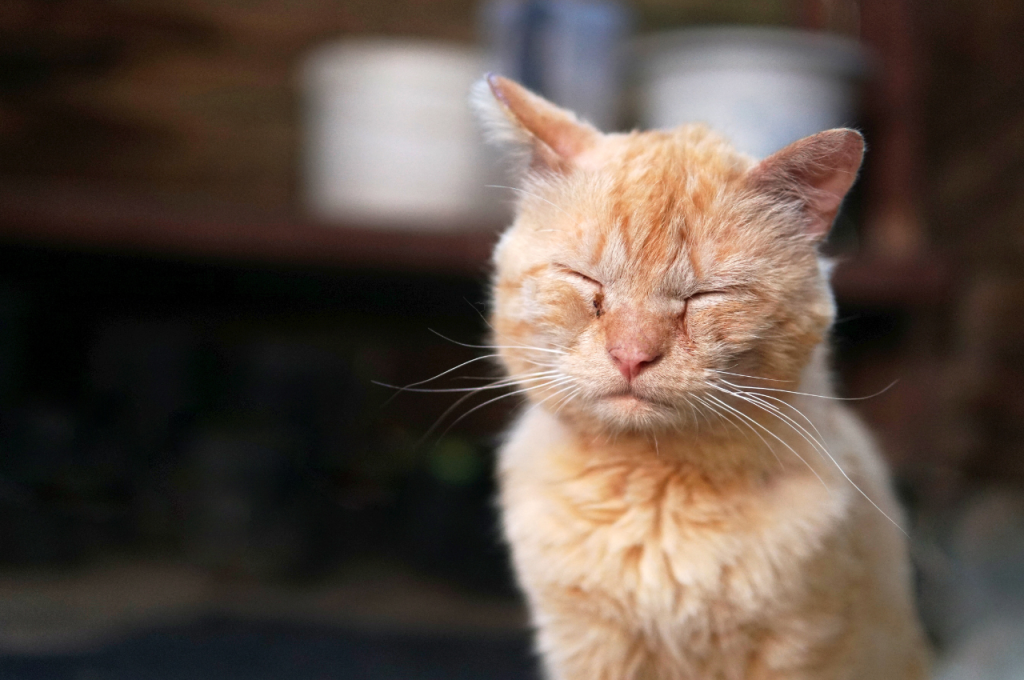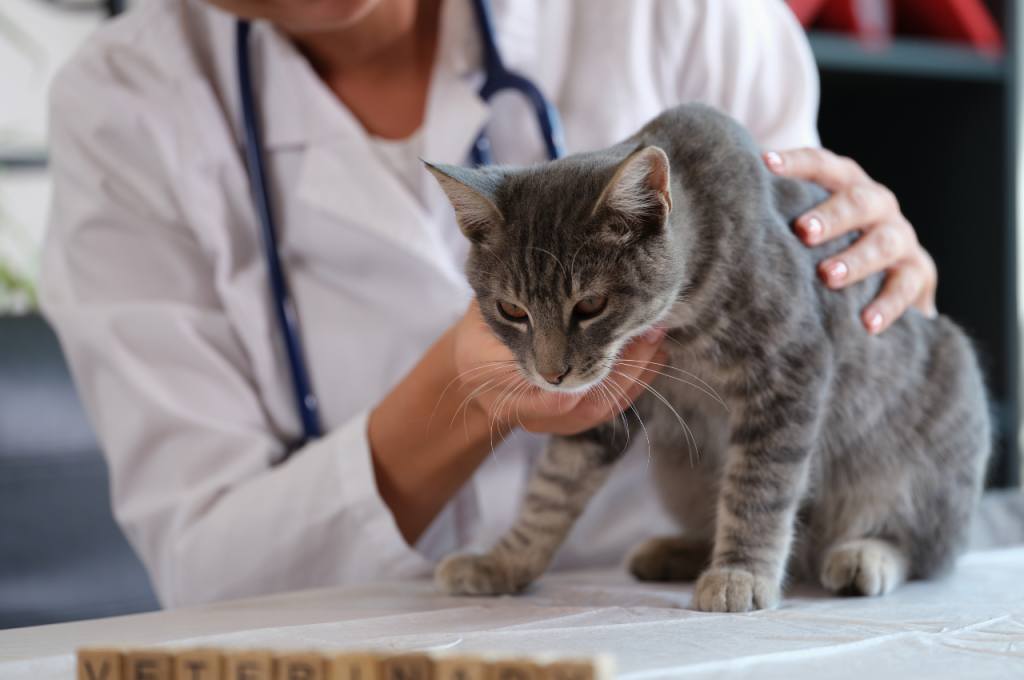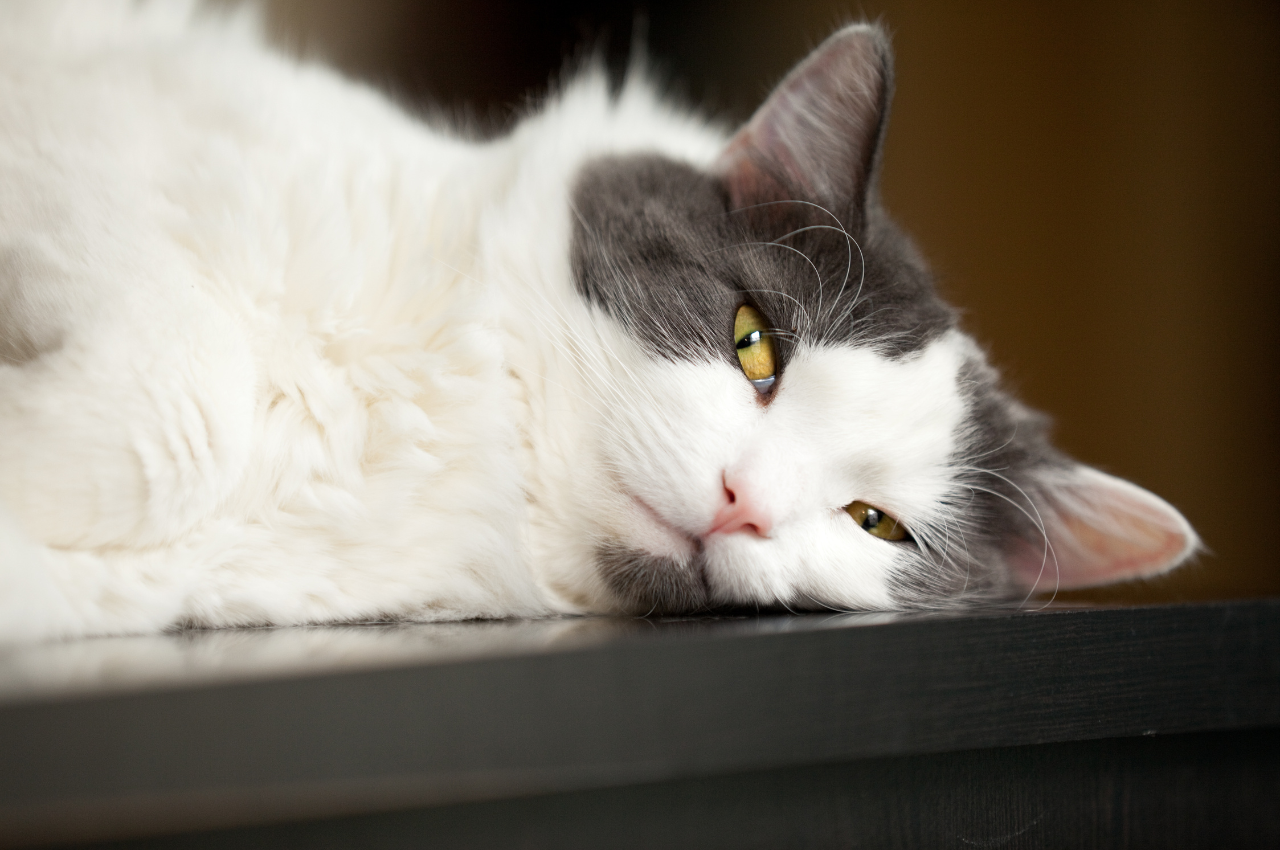To tell if your cat is sick, observe changes in their behavior and appearance, such as decreased appetite, lethargy, vomiting, diarrhea, coughing, sneezing, or changes in litter box habits.
Additionally, monitor for signs of pain, like excessive grooming or hiding. Other symptoms can include weight loss, difficulty breathing, and unusual vocalizations. Regularly check your cat’s eyes, ears, and coat for any abnormalities. If you notice any of these signs, it’s essential to consult your veterinarian promptly for a proper diagnosis and treatment plan. Early detection and intervention are crucial to maintaining your cat’s health and well-being.
Recognizing Subtle Changes in Behavior
Watch out for subtle changes in your cat’s behavior, such as decreased appetite, lethargy, and hiding. These could be signs of illness and should prompt a visit to the vet for a check-up. Keep an eye on any unusual behavior to ensure your feline friend stays healthy.

Cats are known for their independent nature and often hide signs of illness until it’s too late. As a cat owner, it’s important to be able to recognize subtle changes in your cat’s behavior that could indicate a health problem. Here are some key changes to look out for:
Shifts in Social Interaction
Cats are social creatures and enjoy interaction with their humans. A change in your cat’s social behavior could be a sign of illness. If your cat is usually affectionate but suddenly becomes aloof, or if your cat is usually independent but suddenly becomes clingy, it could be a sign that something is wrong. Other changes in social behavior to look out for include a decrease in purring or vocalization and a decrease in grooming behavior.
Variations in Activity Levels
Cats are known for their love of sleeping, but a decrease in activity levels could indicate a health problem. If your cat is usually playful but suddenly becomes lethargic, it could be a sign of illness. On the other hand, if your cat is usually calm but suddenly becomes hyperactive, it could also be a sign that something is wrong. Other changes in activity levels to look out for include a decrease in appetite, a decrease in drinking, and changes in litter box behavior.
Changes in Appearance
Changes in your cat’s appearance can also be a sign of illness. Look out for changes in coat texture or color, as well as changes in skin condition. If your cat’s eyes appear cloudy or if there is a discharge from the eyes or nose, it could be a sign of illness. Other changes in appearance to look out for include changes in weight, changes in posture, and changes in breathing. In conclusion, it’s important to be vigilant and observant when it comes to your cat’s behavior. By recognizing subtle changes in behavior, you can catch potential health problems early and ensure that your cat receives the care they need.
Physical Symptoms to Watch for
Keep an eye out for physical symptoms that may indicate your cat is sick. Look for signs like changes in appetite, lethargy, vomiting, diarrhea, coughing, or sneezing, as these can be indicators of underlying health issues. Regular observation can help catch any potential problems early and ensure your cat receives the necessary care.
Cats are notorious for hiding their illnesses and discomfort, which can make it difficult for owners to tell if something is wrong. However, there are physical symptoms that you can watch for to determine if your cat is sick. Here are some of the most common physical symptoms to watch for:
Unusual Weight Loss or Gain
If your cat is losing weight without any changes to their diet or exercise routine, it could be a sign of an underlying health issue. Similarly, if your cat is gaining weight rapidly, it could be a sign of a hormonal imbalance or other health issue. Keep an eye on your cat’s weight and consult with your veterinarian if you notice any significant changes.
Changes in Appetite or Thirst
Cats can be picky eaters, but if your cat suddenly loses interest in their food or water, it could be a sign of an underlying health issue. Conversely, if your cat is suddenly ravenous or thirsty all the time, it could be a sign of diabetes or other health issues. Keep an eye on your cat’s eating and drinking habits, and consult with your veterinarian if you notice any significant changes.
Other Physical Symptoms to Watch For
In addition to weight changes, appetite changes, and changes in thirst, there are other physical symptoms that you should watch for. These include:
- Vomiting or diarrhea
- Coughing or sneezing
- Difficulty breathing
- Changes in grooming habits
- Changes in litter box habits
- Changes in energy levels or behavior
If you notice any of these physical symptoms, it’s important to consult with your veterinarian as soon as possible. Early detection and treatment of health issues can lead to better outcomes for your cat.
Vocalization and Communication Clues
Cats communicate with us in various ways, and paying attention to their vocalizations can provide valuable insights into their well-being. Changes in their meowing patterns, tone, or volume can be indicative of underlying health issues. By understanding these vocalization and communication clues, you can better assess if your cat is sick and in need of veterinary attention.
Increased Meowing or Silence
Cats are generally known for their vocal nature, but a sudden increase or decrease in meowing could be a sign that something is amiss. If your typically quiet cat suddenly becomes more talkative or excessively meows, it may be trying to communicate distress or discomfort. On the other hand, if your chatty cat becomes unusually silent and stops meowing altogether, it could be a sign of an underlying health issue.
Alterations in Tone or Volume
Another vocalization clue to look out for is any noticeable change in your cat’s meow tone or volume. Pay attention if their meows become more strained, hoarse, or weaker than usual. These alterations could indicate issues with their vocal cords, respiratory system, or even pain. A sudden increase in volume, on the other hand, might suggest your cat is experiencing discomfort or trying to get your attention regarding an unfamiliar sensation they are experiencing.
Understanding your cat’s vocalization and communication clues is essential for identifying potential health issues early on. By being attentive to changes in their meowing patterns, tone, and volume, you can determine if it is time to consult with a veterinarian and provide your feline friend with the necessary care and attention they need.
Coat and Skin Indicators
When it comes to keeping your furry friend healthy, paying attention to their coat and skin indicators can provide valuable insights into their well-being. Coat and skin issues are common signs of underlying health problems in cats. By being observant and noticing any changes, you can identify potential health issues early and seek prompt veterinary care for your beloved feline.

Dullness or Excessive Shedding
If you notice that your cat’s coat has lost its usual luster or if there is a significant increase in shedding, it could be indicative of an underlying health problem. Dullness in the coat and excessive shedding can be caused by various factors such as nutritional deficiencies, skin allergies, parasites, or hormonal imbalances. Keep an eye out for any changes in your cat’s grooming habits and the condition of their coat to detect these indicators early.
Lumps, Bumps, and Wounds
Regularly check your cat’s skin for any lumps, bumps, or wounds. These can be signs of skin infections, abscesses, or even tumors. Run your hands gently over your cat’s body, feeling for any abnormal growths or areas of tenderness. Additionally, inspect their skin for any wounds, redness, or inflammation. If you notice any of these abnormalities, it’s essential to have your cat examined by a veterinarian to determine the underlying cause and provide appropriate treatment.
Eye and Ear Signals
Observing your cat’s eyes and ears can provide valuable insights into their health.
Discharge and Cloudiness
Look for any unusual discharge or cloudiness in your cat’s eyes, which could indicate an infection or other underlying issue.
Scratching and Head Shaking
If your cat is frequently scratching their ears or shaking their head, it may be a sign of ear mites or an ear infection.
Litter Box Habits and Changes
Monitoring your cat’s litter box habits and changes is crucial in detecting early signs of illness. The litter box provides valuable insights into your feline friend’s health, and any alterations in their waste behavior could indicate an underlying health issue. By paying close attention to the frequency and appearance of waste, as well as signs of discomfort or straining, you can proactively address potential health concerns.
Frequency and Appearance of Waste
Keep an eye on how often your cat is using the litter box and the characteristics of their waste. The normal frequency of urination and defecation varies depending on the cat’s age, diet, and overall health. Changes in frequency, such as increased or decreased urination or defecation, can be indicative of health problems. Additionally, observe the appearance of your cat’s waste. Healthy feces are well-formed and moist, while abnormal textures, colors, or excessive odor may signal an underlying issue.
Signs of Discomfort or Straining
Observe your cat’s behavior in the litter box for signs of discomfort or straining. Excessive meowing, vocalization, or prolonged time spent in the litter box without producing waste can indicate potential urinary or gastrointestinal issues. If your cat displays signs of distress, it is essential to seek veterinary attention promptly to rule out any serious health concerns.
Respiratory and Digestive Red Flags
Respiratory and digestive issues can indicate that your cat is not feeling well. It’s important to be aware of the red flags associated with these systems, as they can signal potential health problems. Monitoring your cat’s respiratory and digestive health can help you catch any issues early and seek prompt veterinary care.
Coughing, Sneezing, or Vomiting
Coughing, sneezing, or vomiting in cats can be signs of respiratory or digestive issues. Persistent coughing or sneezing may indicate respiratory infections, allergies, or even asthma. Vomiting can be a result of various digestive problems, including hairballs, food intolerance, or gastrointestinal diseases.
Diarrhea or Constipation
Diarrhea and constipation are common digestive problems in cats. Diarrhea can be caused by dietary changes, infections, or parasites, while constipation may indicate issues with dehydration, blockages, or other health concerns. Both conditions can lead to discomfort and require attention from a veterinarian.
Behavioral and Neurological Warnings
Behavioral and neurological warnings in cats can provide essential clues about their health. Monitoring their behavior and neurological functions can help you identify potential health issues early on. Certain signs, such as seizures, disorientation, or lethargy, may indicate an underlying medical problem that requires prompt attention.
Seizures or Fainting
Seizures or fainting episodes in cats can be alarming. If your cat experiences a seizure, it may exhibit convulsions, drooling, or loss of consciousness. Fainting, although less common in cats, can also signal an underlying health problem. These occurrences necessitate immediate veterinary evaluation to determine the underlying cause and appropriate treatment.
Disorientation or Lethargy
Disorientation in cats may manifest as confusion, unresponsiveness to familiar stimuli, or getting lost in familiar surroundings. Lethargy, on the other hand, can indicate a lack of energy or enthusiasm for usual activities. Both of these behaviors can be indicative of underlying health issues and should prompt a visit to the veterinarian for a thorough examination and diagnosis.
When to Seek Veterinary Care
Knowing how to tell if your cat is sick is crucial. Seek veterinary care if you observe persistent changes in behavior, appetite, or litter box habits, or if symptoms like vomiting, lethargy, or coughing occur.
Emergency Symptoms
If your cat shows any of these emergency symptoms, seek immediate veterinary care:
- Difficulty breathing
- Severe injury or trauma
- Loss of consciousness
- Seizures
Routine Check-ups and Prevention
Regular veterinary check-ups are crucial for your cat’s health. Here’s what to consider:
- Schedule annual check-ups
- Stay up to date on vaccinations
- Monitor weight and eating habits
- Keep an eye on litter box habits
Monitoring and Maintaining Health
Regular monitoring and maintenance of your cat’s health is crucial to ensure they stay healthy. Signs that your cat may be sick include changes in appetite, weight, behavior, and appearance, as well as vomiting, diarrhea, and lethargy. If you notice any of these symptoms, it’s important to consult with your veterinarian for proper diagnosis and treatment.

Regular vet visits and at-home observation are crucial for monitoring your cat’s health. Early detection of any issues can lead to prompt treatment, ensuring your cat stays healthy and happy.
Regular Vet Visits
Schedule annual vet check-ups to keep your cat’s health in check. Vets can detect subtle signs of illness that may go unnoticed at home. Vaccinations and preventive care are essential for your cat’s well-being.
At-home Observation Tips
Observe your cat’s behavior, appetite, and litter box habits regularly. Changes in these areas can indicate illness. Maintain a clean environment to prevent health issues. Provide a balanced diet and fresh water daily.
Conclusion
Incorporating regular check-ups and observing changes in behavior can help detect potential health issues early on. Remember, your cat’s well-being is a top priority. By staying vigilant and proactive, you can ensure your feline friend stays healthy and happy for years to come.
